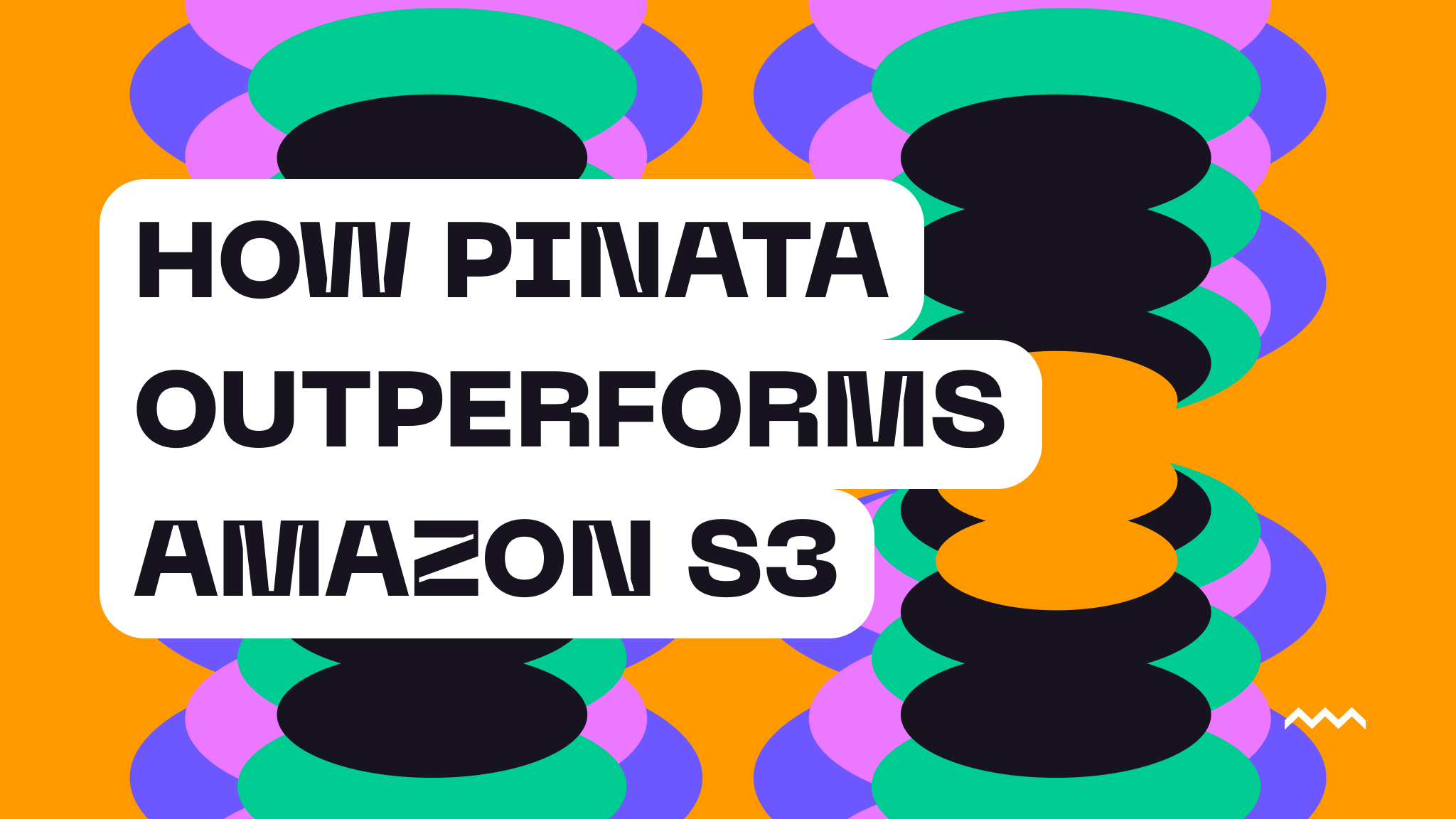Back to blog

Effortless and secure: How Pinata outperforms Amazon S3 for developers
When YouTuber Marques Brownlee (aka MKBHD) launched his highly anticipated wallpaper app, Panels, it was expected to be a hit. Instead, users discovered major flaws, mainly in security.
Panels stored its images in a publicly accessible bucket, making it easy for anyone with basic skills to download the app’s wallpapers for free. Meanwhile, a subscription costs $50 per year for access to the same wallpapers. As you can imagine, this did not sit well with fans, and MKBHD faced severe backlash.
Another shortcoming of the app was that Panels relied on Google Cloud for storage. It’s a widely trusted solution, and highly secure when configured correctly, but it requires complex coding if you want advanced encryption and granular access controls. Unfortunately, complexity leaves room for error, as MKBHD’s app demonstrated.
The main vulnerability in the Panels app was misconfigured GC bucket permissions that allowed unfettered access to the app’s content. Additionally, the app’s client-side payment verification was insecure, which made it susceptible to hacking.The risks that apply here also apply to Amazon S3, which could be argued to be even more popular than Google Cloud and even harder to configure correctly.
With Pinata, such vulnerabilities wouldn’t have occurred.
What is Pinata?
Pinata is a developer-friendly solution for file storage. It’s simple to set up and add applications — no matter your experience level. Its core benefits include:
- Easy API integration: Pinata's API allows developers to connect and start storing data quickly, with minimal lines of code.
- Scalability: Pinata is built to handle growing data needs without any loss in performance.
- Security: The default security measures in Pinata’s distributed infrastructure minimize risks of data exposure and misconfiguration.
- Decentralized storage (via IPFS): Data is distributed across multiple nodes, which reduces reliance on a single server and makes the application more reliable. If you work in the web3 space or need decentralized storage for any reason, Pinata is the biggest IPFS provider on the market.
Compared to Amazon S3, Pinata requires fewer lines of code to set up and configure. Developers can quickly get started without any risk of human error.
What makes Pinata more secure and efficient?
Pinata's File API is private by default without complex configuration, which inherently reduces the risk of exposing files. Access controls are handled server-side, so users cannot manipulate them.
Pinata provides secure file storage and retrieval without any of S3's complexity.
File API
Pinata's File API helps developers manage file storage and retrieval efficiently. The API reduces the complexity of file management by providing consistent endpoints for uploads, automatic content addressing with unique CIDs (content identifiers) for deduplication and version control, seamless CDN (content delivery network) integration, and comprehensive SDKs (software development kit) and CLIs (command line interface).
It enables high speed operations through dedicated IPFS gateways, a global CDN with caching, built-in image optimization, and scalable infrastructure. All of these features make sure that data is accessible and ready when needed.
The Files API scales with your needs. It’s designed to handle high volumes of data and requests, ensuring consistent performance even during traffic spikes.
Simple API configurations
By reducing the number of steps needed to set up and manage storage, Pinata’s API configurations minimize the risk of human error. With fewer steps to set up, developers are less likely to misconfigure access controls, permissions, or other settings. And because Pinata has fewer parameters to adjust, developers achieve secure integrations faster, decreasing the chances of accidental vulnerabilities, such as public data exposure or incorrect permissions.
To better understand how Pinata and Amazon S3 handle common vulnerabilities, let’s break down their differences side by side:
Pinata is self-serve and developer-friendly
Pinata's self-serve model empowers developers to quickly integrate and start using the platform without demos or hand-holding. It’s a faster and more convenient option for hands-on developers who value simplicity and efficiency.
Pinata’s minimal setup and simple API means developers can start using it in minutes. Straightforward access controls allow developers to skip complex bucket configurations and generate limited access keys for uploads or signed URLs for secure retrievals. This means fewer lines of code and quicker onboarding.
- Amazon S3 involves multiple steps, including configuring region, credentials, and defining parameters like bucket name and file paths. It uses AWS SDK to manage the upload.
- Pinata is more straightforward, with fewer lines of code. Pinata imports the SDK, sets up an instance, and uploads a file with minimal configuration. It is simply easier to use.
Pinata keeps things simple. It is so easy to set up that many developers get it up and running within a couple of hours, and sometimes even sooner. See our customer case studies for real-world examples.
Pinata improves load times and increases developer efficiency
Pinata has already improved performance and reduced costs for countless developers.
- Buttrfly improved performance by 20% and cut storage costs by 50% with Pinata’s decentralized storage.
- OpenSea enhanced NFT metadata reliability and speed by 99.2%, leveraging Pinata’s IPFS Gateway for faster retrieval and seamless scalability.
- Spinamp doubled developer efficiency by outsourcing IPFS hosting to Pinata. Their team doesn’t have to worry about scalability anymore.
All of them reported switching over to Pinata with minimal disruption. Whether through increased performance, enhanced reliability, or reduced workload, each company was able to achieve faster results, cut costs, and streamline development efforts with Pinata.
Create an account for free and get started today.

